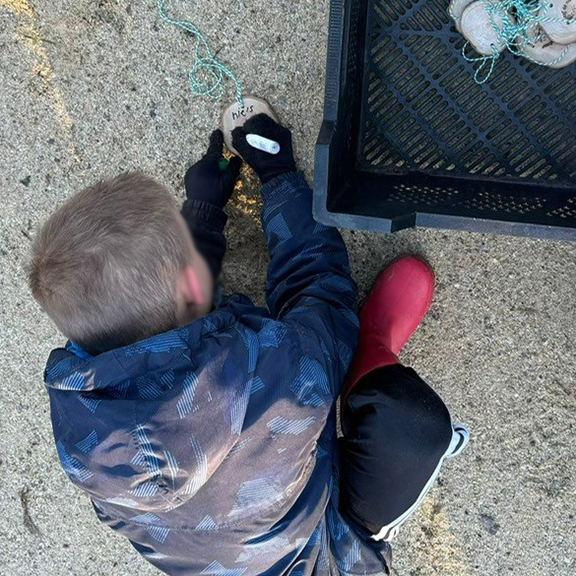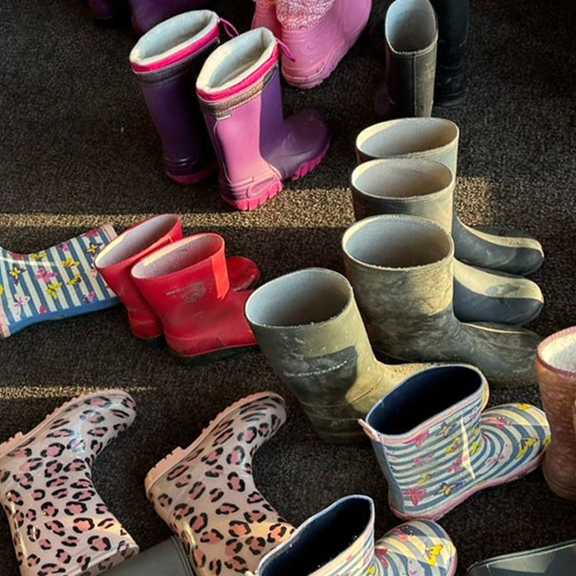How businesses, educators, and communities found common ground in a tiny forest
Tiny forests are truly remarkable things. You’ll find them nestled snugly into the rigid right angles of urban landscapes, where concrete, steel, and glass are ubiquitous and green spaces are scarce.
Tiny forests are appropriately named. They are tiny. Most of these curious woodlands are no larger than a tennis court. They are also truly forests, as each can be home to more than a dozen unique types of native trees. Based on the techniques taught by botanist Akira Miyawaki, the wide variety of vegetation is carefully curated to attract hundreds of species of insects, birds, and other animals. This, in turn, draws in the locals who seek an escape from the sweltering heat and a way to reconnect with nature.
According to a recent New York Times article, tiny forests “can grow as quickly as 10 times the speed of conventional tree plantations, enabling them to…sequester more carbon, while requiring no weeding or watering after the first three years.”
In recent years, the fascination with tiny forests has grown even faster than the trees themselves. In 2015, national conservation group IVN worked in collaboration with the students and locals to plant the very first tiny forest in Zaanstad NL. Less than a decade later, more than 500 tiny forests stand across Europe and the UK alone—with countless more across Africa, Asia, the Americas, and the Middle East.
A partnership takes root
In the spring of 2022, Microsoft learned that the municipality of Middenmeer, North Holland was working on plans to create 22 tiny forests with the goal of enriching the biodiversity across its primary school campuses.
The timing and proximity were perfect. Just a few kilometers away, Microsoft was working on the first phase of a multi-year biodiversity initiative of its own. Collaborating with local landscape architects, Microsoft was in the process of introducing 150 native trees and 2,300 square meters of shrubs, grasses, and groundcovers to the outskirts of its datacenter campus.
The native plants Microsoft chose were intended to mirror a healthy, resilient ecosystem — supporting biodiversity, improving stormwater control, and preventing erosion, all while reflecting the natural beauty of Noord-Holland.
And so, a serendipitous partnership between the Middenmeer community and Microsoft emerged. Understanding that, with current funding, it would take the municipality 11 years to finish all 22 tiny forests, Microsoft has committed funding for the project. As Middenmeer finalizes its tiny forest, Microsoft is concurrently gearing up for phase 2 of plantings happening on the Microsoft datacenter campus.
Cultivating the next generation of environmental leaders
With both parties aiming to enrich North Holland’s biodiversity, the conversation naturally turned to broader educational goals for the community.
Microsoft has spent the past several years studying biomimicry. As Kaitlin Chuzi, Microsoft’s Director of Biomimicry explained, “The practice is centered around the idea that nature has 3.8 billion years of experience refining and perfecting its designs—and by studying and learning from the natural world around us, we can find inspiration to create more efficient and sustainable engineering solutions to human challenges. The tiny forest is a perfect example.”
To share its learnings, and to expand on its shared mission with the Middenmeer community, Microsoft partnered with BiomimicryNL, a Netherlands-based firm specializing in biomimicry education and training for professionals, to host Biomimicry Education Day at the St. Antonius School.
Because the science of biomimicry is just decades old, many of the school’s teachers were never exposed to the topic when they were students. So part of the focus of Biomimicry Education Day was giving the St. Antonius teachers the knowledge and tools they’d need teach lessons on biomimicry in their classrooms.
The day began in the classroom, where the 9-year-old students were given natural artifacts to study and observe, and encouraged to imagine ways the features in the object’s design could be applied to everyday life designs. It’s not hard to see how the suckers on the tentacles of an octopus could inspire the invention of a suction cup. Or how the burrs of a plant could lead to the design of Velcro. The shape of a shell has many of the acoustic properties of a violin. And a beehive has structural features that are mimicked in buildings. By analyzing objects like these, the children can enhance their problem-solving skills and learn to approach challenges in innovative ways. Some ideas included anti-slip bowls inspired by walnut husks, water collecting shelters inspired by seashells and mattresses inspired by moss.
Of course, no Biomimicry Education Day would be complete without venturing out into nature. The budding biomimicry specialists were given a tour of a living, breathing tiny forest. The trees and plants were labeled so the kids could learn the names of everything they saw. They also learned how different plantings can be used to attract pollinators, like bees—and how bees fertilize other plants so they can grow seeds and berries that feed small animals and birds. In a short period of time, the students began to realize just how interconnected and co-dependent nature really is.
Tiny forests were always intended to cultivate ecological diversity. But over the years, something unexpected took root and grew alongside the trees and plants—diverse and fertile relationships. Relationships between community and business. Between business and government. Between policy and possibility. These relationships are all built on mutual benefit. Upon sustainability and resilience.



